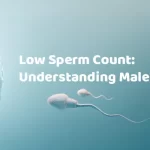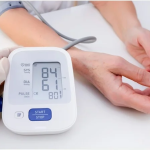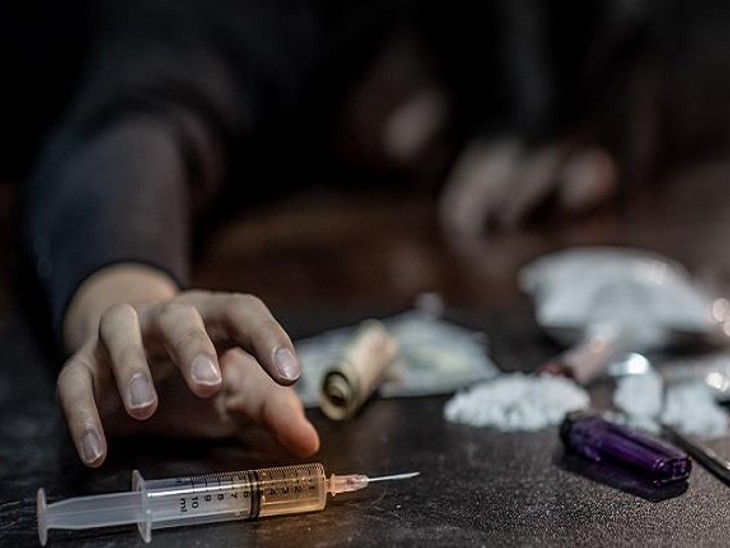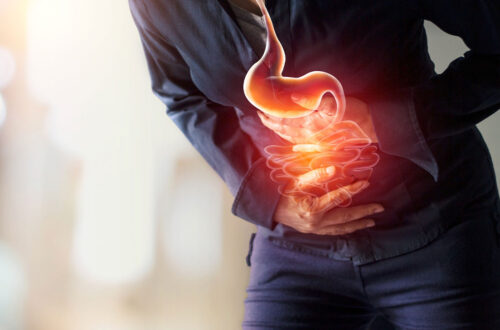What is Iron-Deficiency Anemia?
How do you fix low iron levels can be managed by first knowing what iron-deficiency is all about. Iron-deficiency anemia is a condition characterized by a shortage of iron in the body, which leads to a decreased production of healthy red blood cells. This is the most prevalent form of anemia.
Iron is crucial for making hemoglobin, a protein in red blood cells that enables them to carry oxygen throughout the body. Without sufficient iron, the body cannot produce enough hemoglobin, resulting in iron-deficiency anemia.
What Are the Symptoms of Iron-Deficiency Anemia?
The symptoms of iron-deficiency anemia can vary depending on its severity. Individuals with mild or moderate iron-deficiency anemia might not exhibit noticeable symptoms. However, as the condition worsens, common symptoms of anemia can appear, such as:
- Fatigue
- Shortness of breath
- Chest pain
- Dizziness or lightheadedness
- Cold hands and feet
- Pale skin
What Causes Iron-Deficiency Anemia?
The body needs iron to produce healthy red blood cells. Various conditions and factors can increase the risk of developing iron-deficiency anemia, including:
Blood Loss
Loss of blood results in a loss of iron. Blood loss can occur in several ways:
- Gastrointestinal Tract Bleeding: Conditions such as inflammatory bowel disease, ulcers, colon cancer, and other gastrointestinal disorders like celiac disease can cause bleeding in the GI tract.
- Traumatic Injuries or Surgery: Any injury or surgical procedure that leads to significant blood loss can reduce iron levels.
- Heavy Menstrual Periods or Bleeding During Childbirth: Excessive menstrual bleeding or bleeding associated with childbirth can deplete iron stores.
- Regular Use of Certain Medications: Long-term use of medications such as aspirin or nonsteroidal anti-inflammatory drugs (NSAIDs) like ibuprofen and naproxen can lead to bleeding in the gastrointestinal tract.
- Urinary Tract Bleeding: Bleeding in the urinary tract, though less common, can also contribute to iron deficiency.
Problems Absorbing Iron
Certain conditions and medications can impair the body’s ability to absorb iron, leading to iron-deficiency anemia:
- Genetic Conditions: Rare genetic disorders can block iron absorption in the intestines or make it harder to stop bleeding.
- Endurance Sports: Athletes engaged in endurance sports can lose iron through their gastrointestinal tracts and the breakdown of red blood cells.
- Intestinal and Digestive Conditions: Diseases such as celiac disease, ulcerative colitis, Crohn’s disease, and Helicobacter pylori infection can impair iron absorption.
- Surgery on the Stomach and Intestines: Surgical procedures, including weight loss surgery, can affect the body’s ability to absorb iron.
Other Medical Conditions
- Kidney Disease: Individuals with kidney disease may not produce enough erythropoietin, a substance necessary for making red blood cells. Doctors may prescribe erythropoietin to patients with kidney disease.
- Chronic Inflammatory Conditions: Long-lasting conditions that cause inflammation, such as congestive heart failure or obesity, can affect the body’s ability to regulate and use iron.
In young children, iron-deficiency anemia can develop if they do not consume enough iron-rich foods, typically occurring between 9 months and 1 year of age as they transition to solid foods.
How Do You Prevent Iron-Deficiency Anemia?
Preventing iron-deficiency anemia involves addressing the causes of blood loss or iron absorption problems. Additionally, maintaining a healthy diet that includes iron-rich foods and vitamin C can help keep iron levels adequate.
Good Sources of Iron
- Beans
- Dried fruits
- Eggs
- Lean red meat
- Salmon
- Iron-fortified breads and cereals
- Peas
- Tofu
- Dark green leafy vegetables
Vitamin C-Rich Foods
- Oranges
- Strawberries
- Tomatoes
Vitamin C enhances iron absorption, so including these foods in your diet is beneficial. Ensuring toddlers consume enough iron-rich solid foods is also important for preventing iron-deficiency anemia in young children.
How Much Iron Do I Need Each Day?
The recommended daily intake of iron varies based on age, sex, and whether you are pregnant or breastfeeding.
Including a variety of iron-rich foods in your diet, such as beans, dried fruits, eggs, lean red meat, salmon, iron-fortified breads and cereals, peas, tofu, and dark green leafy vegetables, can help meet your daily iron requirements.
Recommended Daily Iron Intake for Children and Adults
The table below lists the recommended daily amounts of iron in milligrams (mg) for different ages and stages of life:
- Infants (0-6 months): 0.27 mg
- Infants (7-12 months): 11 mg
- Toddlers (1-3 years): 7 mg
- Children (4-8 years): 10 mg
- Children (9-13 years): 8 mg
- Teen Boys (14-18 years): 11 mg
- Teen Girls (14-18 years): 15 mg
- Adult Men (19-50 years): 8 mg
- Adult Women (19-50 years): 18 mg
- Adults (51 years and older): 8 mg
- Pregnant Women: 27 mg
- Breastfeeding Teen Girls (under 18 years): 10 mg
- Breastfeeding Women (18 years and older): 9 mg
These guidelines ensure that individuals at different life stages receive the appropriate amount of iron to maintain good health.
How is Iron-Deficiency Anemia Diagnosed?
Diagnosis
To diagnose iron-deficiency anemia, your doctor will order several blood tests. These typically include a complete blood count (CBC), as well as tests to measure hemoglobin, blood iron levels, and ferritin levels.
Tests for Diagnosis:
- Complete Blood Count (CBC): This test measures the levels of different components in your blood, including red blood cells and hemoglobin.
- Hemoglobin Levels: Low hemoglobin indicates anemia.
- Blood Iron Levels: Low levels of iron in the blood suggest iron deficiency. For both men and women, iron levels lower than 10 micromoles per liter (μmol/L) are considered deficient. Normal iron levels range from 10 to 30 μmol/L.
- Ferritin Levels: Ferritin is a protein that stores iron. Low ferritin levels indicate low iron stores. For both men and women, ferritin levels below 10 micrograms per liter (μg/L) are considered deficient. Normal ferritin levels range from 40 to 300 μg/L for men and 20 to 200 μg/L for women.
If these tests show low iron and ferritin levels, along with low hemoglobin, it confirms a diagnosis of iron-deficiency anemia.
How is Iron-Deficiency Anemia Treated?
Treatments
There are several treatment options for iron-deficiency anemia:
- Iron Supplements:
- Oral Iron: The most common treatment involves taking iron supplements, often referred to as iron pills. These help increase the iron levels in your body. It typically takes three to six months to restore iron levels. During pregnancy, iron supplements are often recommended.
- Managing Side Effects: If you experience side effects such as a bad metallic taste, vomiting, diarrhea, constipation, or an upset stomach, consult your doctor. They may suggest taking the supplements with food, lowering the dose, or trying a different type of iron supplement.
- Intravenous (IV) Iron:
- IV Iron Therapy: For some individuals, especially those with severe iron-deficiency anemia or chronic conditions, iron is administered directly into a vein through IV therapy. This method can quickly restore iron levels, often in just one or a few sessions.
- Side Effects: Side effects like vomiting or headaches can occur immediately after the treatment but usually subside within a day or two.
- Medications:
- Erythropoiesis Stimulating Agents (ESA): These medications help the bone marrow produce more red blood cells. ESA is typically used alongside iron therapy, particularly for individuals with chronic conditions such as kidney disease that contribute to iron-deficiency anemia.
- Blood Transfusions:
- Transfusions: In cases of severe iron-deficiency anemia, blood transfusions can quickly increase the number of red blood cells and iron levels in the blood.
- Surgery:
- Surgical Intervention: If internal bleeding is the cause of iron deficiency, surgery may be required to stop the bleeding.
- Diet and Lifestyle:
- Dietary Adjustments: Your doctor may recommend adopting heart-healthy eating habits and choosing iron-rich foods such as beans, dried fruits, eggs, lean red meat, salmon, iron-fortified breads and cereals, peas, tofu, and dark green leafy vegetables.
- Vitamin C: Consuming foods rich in vitamin C, such as oranges, strawberries, and tomatoes, can enhance iron absorption.
- Avoiding Iron Absorption Inhibitors: Be aware that some foods and beverages, like black tea, can reduce iron absorption.
Following these treatment steps and dietary recommendations can help effectively manage and treat iron-deficiency anemia.
What Happens If Iron-Deficiency Anemia is Not Treated?
Consequences of Untreated Iron-Deficiency Anemia
If iron-deficiency anemia is left undiagnosed or untreated, it can lead to a range of serious complications, including:
- Fatigue:
- Persistent and severe tiredness, making it difficult to perform daily activities.
- Headaches:
- Frequent headaches due to insufficient oxygen supply to the brain.
- Restless Legs Syndrome:
- A condition characterized by an uncontrollable urge to move the legs, often accompanied by uncomfortable sensations.
- Heart Problems:
- Untreated iron-deficiency anemia can lead to heart issues such as an enlarged heart, heart murmurs, or heart failure due to the increased workload on the heart to pump more blood to compensate for the low oxygen levels.
- Pregnancy Complications:
- Pregnant women with untreated iron-deficiency anemia are at higher risk for preterm delivery, low birth weight, and postpartum depression.
- Developmental Delays in Children:
- Iron-deficiency anemia in children can result in delayed growth and development, both physically and cognitively.
Additionally, iron-deficiency anemia can exacerbate existing chronic conditions and reduce the effectiveness of their treatments. This can complicate the management of diseases such as chronic kidney disease, heart failure, and other long-term health issues.
Prompt diagnosis and treatment of iron-deficiency anemia are crucial to avoid these potential complications and maintain overall health and well-being.
SEE MORE
Natural Treatments for the Brain
Cucumber Beautifies and Cleanses the Skin
Turmeric for your stomach and skin

A graduate of Computer Science and Information Management Technology. Diploma – Caregiving, Certificates – Dementia and Diabetes Awareness and Management. A researcher, blogger, songwriter, singer and acoustic guitarist. Born in an environment where natural talents such as healing are imparted at our natural birth. This natural talents of healing is the result of our genetic inheritance and the training from family environment.














